BY MARC ALOAN
Responsible for preparing and leading their crews into battle, company officers must be equally as proficient in strategy and tactics as they are at supervision and management. We expect them to skillfully jump between the roles of leader and follower to meet the needs of the organization.
- Fire Service Small Unit Leadership
- Building the Ladder: Officer Development Programs
- Introspection and the Company Officer
- The Crucial Need for Officer/Staff Meetings
Company officers are a unique version of middle management. They observe, assess, and evaluate the work of their personnel, and they do so while working alongside their teams. They also simultaneously execute many of the tasks they also manage. However, as departments juggle greater expectations and requirements from internal and external stakeholders, company officers are absorbing administrative responsibilities that overshadow their primary purpose of serving as forward, task-level supervisors (photo 1).

1. The main function of a company officer is supervision at the task level. (Photos by author unless otherwise noted.)
Staffing Challenges
Despite countless initiatives aimed at maintaining adequate staffing, for many departments across the country short staffing is slowly becoming normal staffing. As we have continued to be burdened with the impossible mandate of “doing more with less,” a growing number of departments struggle to maintain current service levels and, in many cases, increased service levels as the call volume and mission expand faster than solutions to the recruitment and retention problems. Large or small, career or volunteer, almost every department faces shrinking budgets, rosters, or tenure. All rungs of the organizational ladder feel the impact of short staffing.
As the bridge between operations and administration, company officers frequently shoulder a disproportionate volume of increased departmental demands. They often fill gaps in training, prevention, logistics, and administration on top of overseeing day-to-day activities, supervising a company, and responding to emergencies. Even with staffing reductions and vacancies requiring many company officers to assume primary and backup roles when executing operational tasks, the preparation and selection of company officer candidates concentrate on those with high administrative prowess. With more prospective company officers having less tenure, knowledge, and experience, we are compelled to reexamine how we prepare and utilize the company officer (photo 2).

2. Limited staffing requires company officers to function as the backup firefighter.
Day-to-Day Responsibilities
Understanding the value of the working boss starts with decision makers fostering cultures that prevent company officers’ day-to-day responsibilities from chaining them to a desk. Although effective administration is critical to effective emergency operations, the fire service cannot continue the unspoken but frequent practice of using the company officer position as a dumping ground for tasks and responsibilities no one else wants to handle. The delegation of additional responsibilities and managerial mandates cannot be so arduous that it prevents company officers from spending the bulk of their time alongside their personnel, building a cohesive team. All additional responsibilities must be out of necessity, weighing the increase in demands on the company officer against the potential impact on operational readiness and tactical competency.
Company officers need to remain proficient in the core competencies their crews will carry out, regardless of whether they will execute those skills themselves, day in and day out. In doing so, they project and personify what they expect of their personnel, turning their words into the actions necessary to achieve desired outcomes. Without their own tactical proficiency, company officers cannot effectively teach and develop their crews’ skills.
A good company officer must also be prepared to seamlessly operate as the backup firefighter, when necessary, especially with limited staffing. This makes maintaining the competence and fitness to perform fundamental fireground skills such as masking up, throwing ground ladders, deploying and advancing hose, search, and emergency medical care paramount, regardless of rank (photo 3).
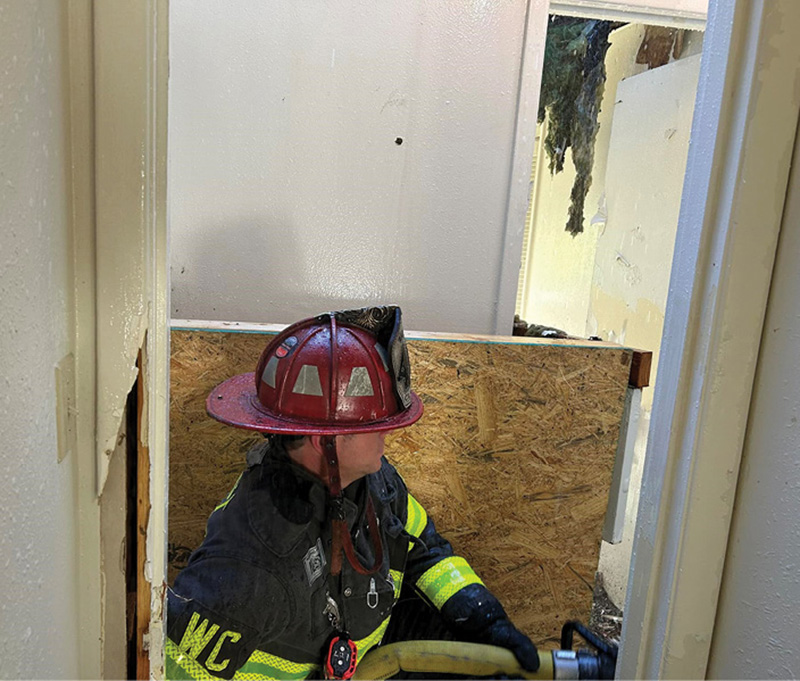
3. Company officers must maintain proficiency in the skills they are asked to teach and maintain in their personnel. (Photo by Hornet Fire Training.)
Workspace Considerations
While company officers are typically afforded the luxury of an assigned space within their firehouses to complete reports, hold meetings, work on special projects, and maybe even sleep, this space should not be confused with their real office.
The “seat” is where company officers earn their keep, making the cab of the apparatus their real office. It serves as both the place where the response begins and the place where the incident ends after taking up. It holds the tools of the trade, typically in the form of maps, preplans, radios, hand tools, and personal protective equipment. It is where the company officers will size up both their crews and their scenes, shaping the course of each in the process. The seat is both a place of business and a place of refuge, where the trade is learned and bonds are made. With that understanding, we should advocate that our company officers spend as much time as possible in the “office with a view” (photo 4).
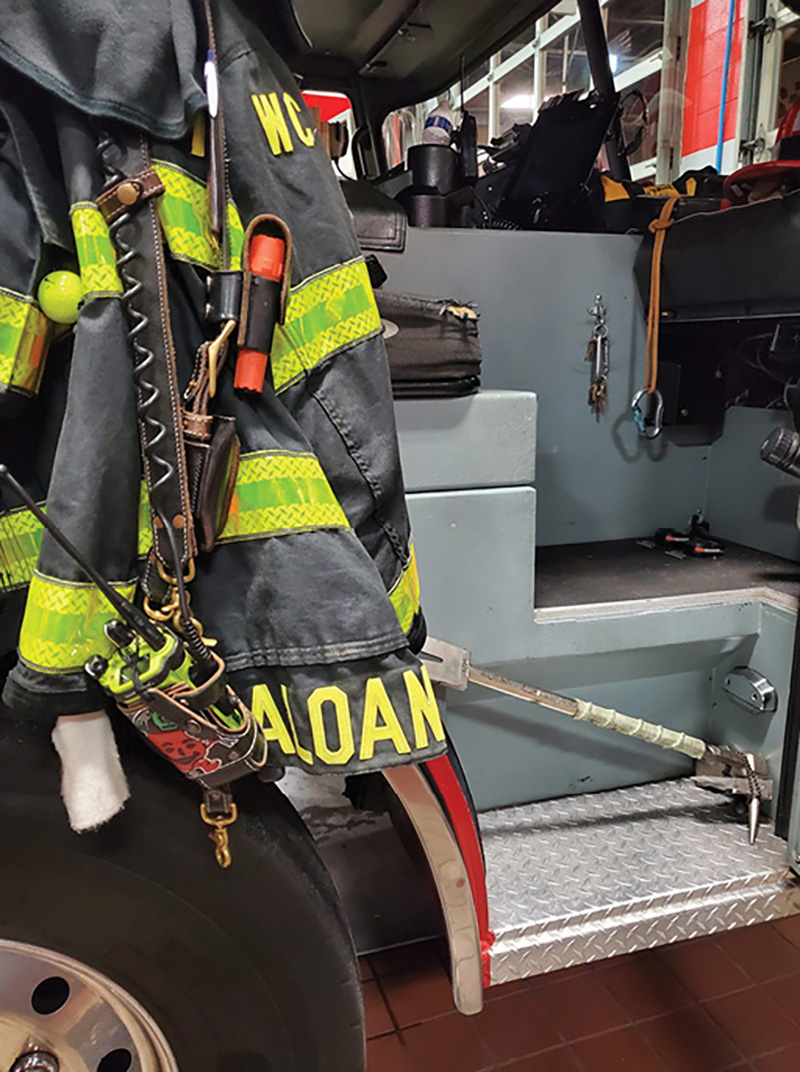
4. The “seat,” where the company officer works.
Unfortunately, we seem committed to the belief that the corporate world holds the best practices for management, supervision, and leadership, regardless of its own failures in the same areas. This mentality that has slowly muddied the waters between buddy and boss, a distinction that didn’t seem all that necessary in the fire service until recent years.
Unlike many of their private sector counterparts, company officers are working bosses, physically engaged alongside their personnel day in and day out. Their involvement on and off the fireground is the most influential factor on the readiness, performance, and morale of those they serve with. This is why we cannot mistake an office in the firehouse for the company officers’ workplace, misleading them to concentrate less on operations in the process. Still, we continue to build curricula that neglect what needs to happen in the street in favor of what we think should happen in the station. In turn, we fail to prepare our company officers for the rigors they will face by creating far too much separation between our bosses and their crews (photo 5).
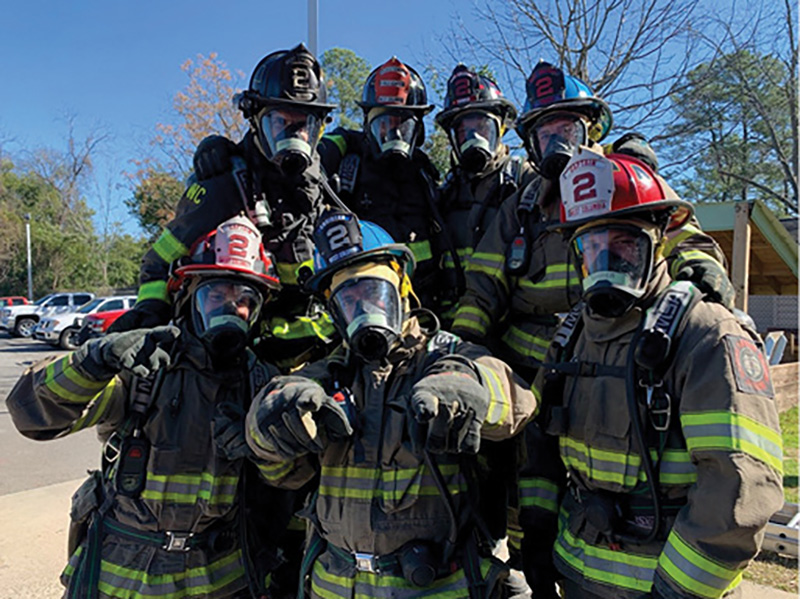
5. The readiness of the crew is heavily influenced by the company officer.
Understanding the District
It should be normal for company officers to spend more time in their district than they do in their firehouse, not some type of archaic ideology from a fire service gone by. Getting out of the firehouse is the only way to collect invaluable information about the people and places they protect. It is the best way to identify critical details about building construction, fire protection systems, target hazards, and civic development projects. It is how a working knowledge of streets, hydrants, access points, and infrastructure improvements is developed to facilitate the selection of response routes and proper apparatus spotting. Using characteristics of the district reinforces the lessons learned in the classroom or drill tower with real-world data, scenarios, and evolutions, guiding our training plans and responses (photo 6).
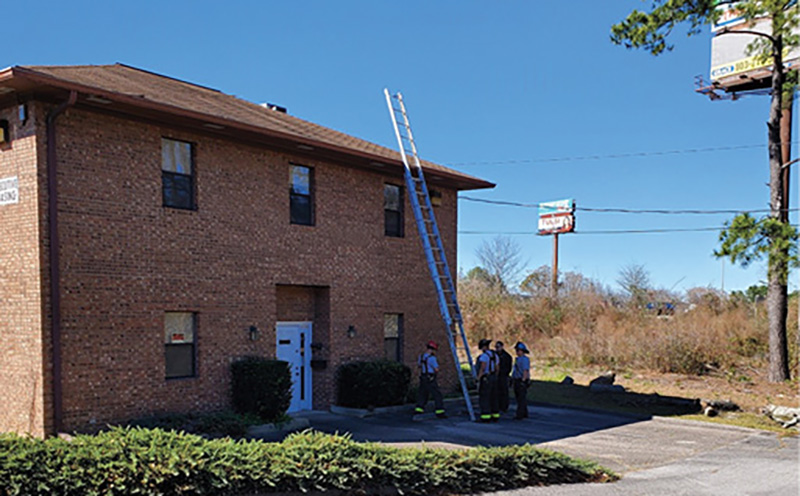
6. Crews must apply their training and education to real buildings in their district.
The decisions made by company officers in the first five minutes of an incident are usually the most significant factors that determine its outcome. Familiarity of both the company’s district and surrounding aid districts arms company officers with essential intelligence for selecting appropriate strategies and tactics. With proactive tactical planning, a company officer increases the likelihood of accomplishing tactical benchmarks accurately, quickly, and efficiently. A vast knowledge of the coverage area offers the company officer concise but detailed arrival reports, size-ups, water supply plans, and operational assignments. All of this limits chaos and freelancing as the incident grows. Although each incident presents different conditions and challenges, proper preparation lends to intentional, calculated actions (photo 7).
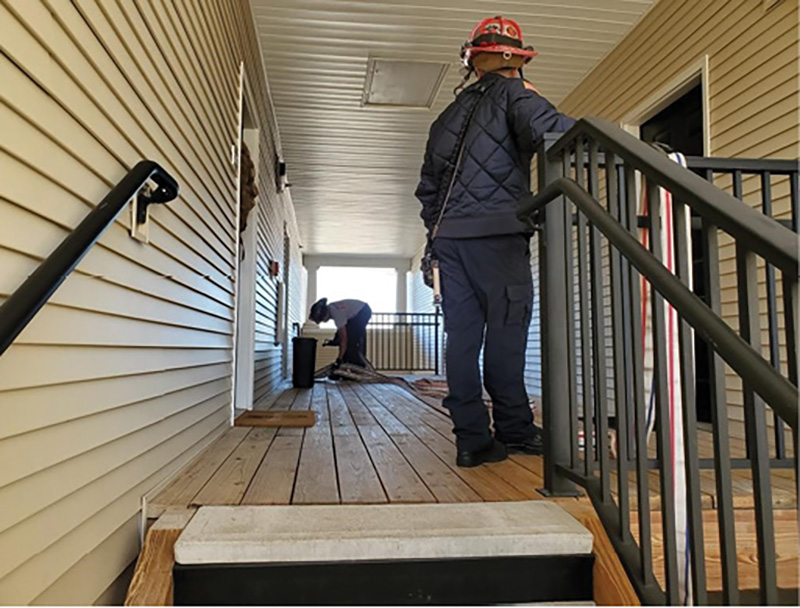
7. An officer oversees his company trying different methods of long hose deployments.
Community Relations
Operational intelligence may be the main objective of venturing outside the walls of our firehouses; however, there is also no greater equity for the department than a company engaged in the community it serves. Crews can interact with and educate the public, meet business owners, and build relationships with community advocates, keeping the citizens informed about the department in the process. These informal encounters combine company-level training with community risk reduction, maximizing our time and impact. They also drum up support for the political referendums that generate funding for personnel and capital purchases. However, this only happens when company officers intentionally transit their district on a regular basis, pull the parking brake, and get out of the rig (photo 8).

8. Crews should always seek opportunities to interact with the community.
The Evolution of Development
Getting our company officers back in the field will require a significant transformation of our professional development programs. We cannot continue to push antiquated management principles that bring the command and control necessary for running the fireground into the firehouse. While company officers will always need to be capable of conflict resolution, discipline, and documentation, more company officers are finding themselves operating with only one or two firefighters assigned to their firehouses where building relationships, trust, and respect will make or break the company.
Our company officers need to be educated in emotional intelligence, different styles of learning, and generational differences as they balance their formal managerial responsibilities with the informal coaching and mentoring that were traditionally handled at the peer level. We should be pushing training that enables our company officers to be revered for their abilities, not feared based on their authority (photo 9).
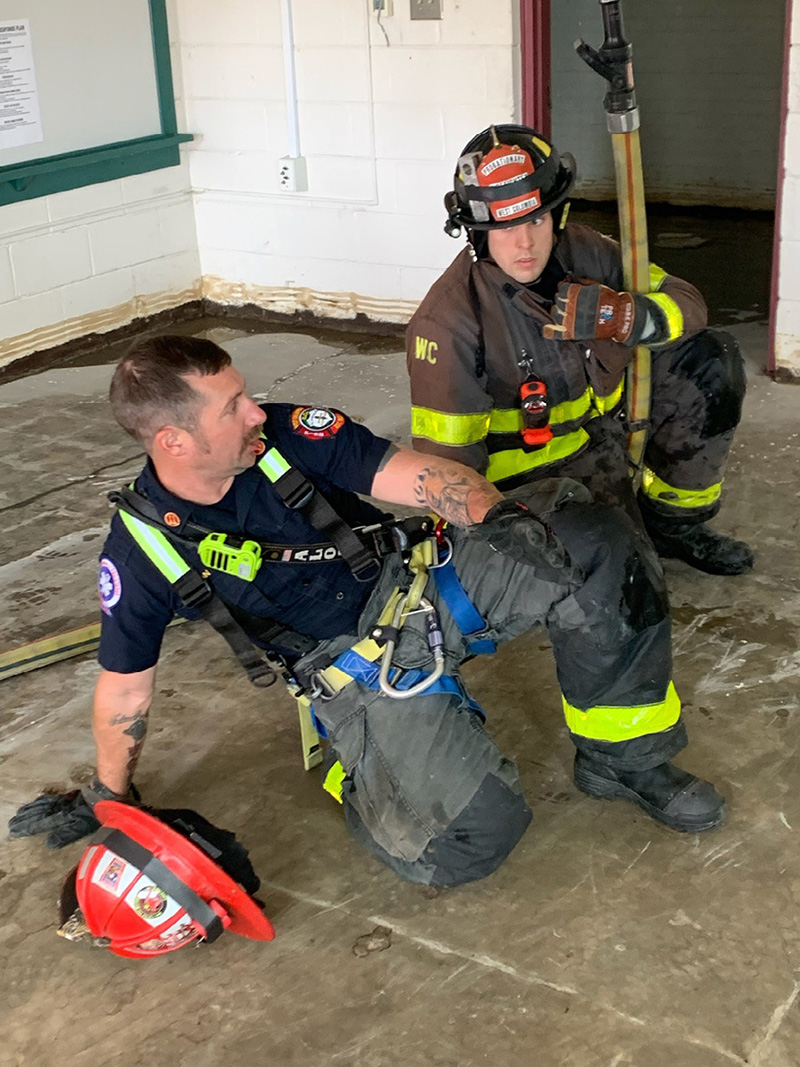
9. Trust and respect are earned through training and labor.
This also means recognizing that many of our organizational problems are rooted in poor operational competency. As the number of promotional candidates with more than a few years on the job continues to diminish, we cannot continue to rely on experience gained as a firefighter or operator to be the primary developmental tool for supervisory transition. Leading a company is different from being in a company. This creates a learning curve for knowledgeable, experienced, battle-hardened firefighters as well. We can overcome this challenge by placing greater emphasis on tactical-level scenarios where company officers operate independently, on a truncated timetable, without direct guidance from their superiors. Rather than expanding their administrative knowledge, candidates are better served by training on initial company actions; clearly communicating while on SCBA; developing nonverbal communication methods with their crews; maintaining situational awareness while carrying out tasks; and addressing frantic, upset bystanders.
Continuing to leave realistic scenarios and environments out of professional development will produce company officers who are more proficient at checking boxes than they are at leading a team under stressful conditions. Fortunately, company-level leadership classes that incorporate operating on an apparatus in gear with real radios and with actual people serving as crew members are slowly becoming available. These “officer academies” recognize the need to introduce stress, discomfort, and distractions in environments we control. Although these programs want all students to succeed, the real pass rate is measured by how successfully scripted and unscripted failure is overcome, building experience and resiliency under actual adversity. More departments, training groups, and regional and state academies should work to integrate this style of instruction into their development models (photo 10).

10. Company officer development must incorporate operational duties. (Photo by Hornet Fire Training.)
Looking Ahead
The rank of company officer is by far the most physically and mentally demanding position in the fire service and one that none of us should take lightly. The small raise and few perks that may come with the position do not reflect the level of accuracy, responsibility, and accountability it requires. However, when we prioritize and embrace the operational aspect of this role, we remember that it is also, by far, the most rewarding position in the department.
As staffing challenges continue, the term “all hands” is going to take on a much more literal meaning in many jurisdictions. We need to be more purposeful in creating environments that develop, empower, and enable company officers to spend more time working with their crews than they do behind a desk. It’s time to evolve our expectations and professional development models and teach company officers how to lead from the front, not the back!
MARC ALOAN is a battalion chief with the West Columbia (SC) Fire Department and creator of The Fire Inside (thefireinside.org). He is an active speaker, author, and instructor with 20 years of combined volunteer and career service. He has a bachelor’s degree in fire protection administration and a master’s degree in organizational leadership.

